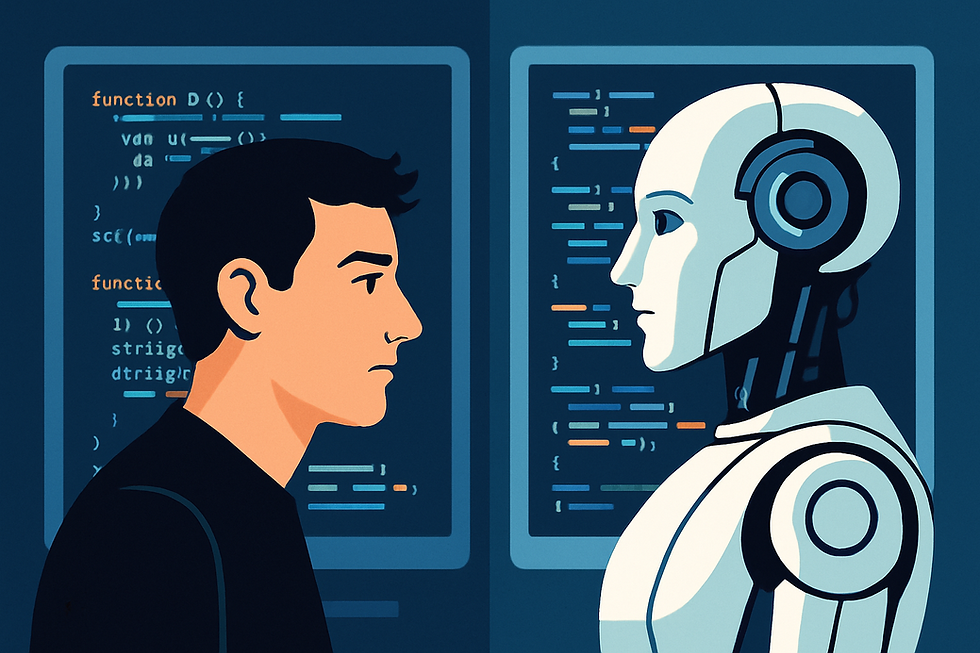OpenAI's Revolutionary Audio Models: Transforming Voice Agents with Advanced Speech Recognition and Synthesis
- Mary

- Mar 22
- 3 min read
OpenAI has significantly advanced the landscape of voice technology with the release of new speech-to-text and text-to-speech audio models through their API. These groundbreaking developments represent a major leap forward in creating more intuitive, accurate, and customizable voice interactions—setting new benchmarks in the industry and opening doors for more sophisticated voice agent applications.

State-of-the-Art Speech Recognition Capabilities
The newly introduced gpt-4o-transcribe and gpt-4o-mini-transcribe models establish new performance standards, outperforming existing solutions, particularly in challenging environments. These models excel at accurately processing speech with various accents, background noise, and different speaking speeds—making them exceptionally valuable for real-world applications.
Technical Excellence Behind the Innovations
What makes these new models truly exceptional is their technical foundation. Building upon the GPT-4o and GPT-4o-mini architectures, OpenAI has implemented several innovative approaches to enhance performance:
Specialized OpenAI's Revolutionary Audio Models-Centric Training
The models underwent extensive pretraining using specialized audio-centric datasets, allowing them to develop a deeper understanding of speech nuances and patterns. This targeted approach has resulted in exceptional performance across a wide range of audio-related tasks.
Revolutionary Distillation Techniques
OpenAI has refined its knowledge distillation methodologies, effectively transferring capabilities from their largest audio models to smaller, more efficient ones. Advanced self-play methodologies have created distillation datasets that accurately replicate genuine conversational dynamics, improving overall quality.
Reinforcement Learning for Enhanced Accuracy
Perhaps most impressive is the reinforcement learning (RL) paradigm integrated into the speech-to-text models. This approach has dramatically improved transcription precision while reducing hallucination, making these solutions exceptionally reliable even in complex recognition scenarios.

Benchmark-Setting Performance Metrics
The performance improvements are clearly demonstrated in benchmark testing. On the FLEURS (Few-shot Learning Evaluation of Universal Representations of Speech) multilingual benchmark, the new models consistently outperform previous solutions like Whisper v2 and Whisper v3 across all language evaluations. Lower Word Error Rates (WER) indicate significantly fewer transcription errors across multiple languages.
Unprecedented Text-to-Speech Customization
The gpt-4o-mini-tts model introduces a revolutionary capability: instructability. For the first time, developers can not only specify what the model should say but also how it should say it. This opens up entirely new possibilities for creating expressive, context-appropriate voice interactions—from sympathetic customer service responses to engaging storytelling experiences.
Applications Across Industries
These advancements have immediate practical applications:
Enhanced customer service call centers with more accurate transcription
Improved meeting note transcription systems
More natural-sounding and emotionally responsive voice assistants
Expressive narration for creative and educational content
Future Development Roadmap
OpenAI has signaled continued investment in improving these audio models, with plans to explore options for custom voices while maintaining alignment with safety standards. Additionally, the company is expanding into other modalities, including video, to enable comprehensive multimodal agentic experiences.
Developer Accessibility
These new audio models are now available to all developers through OpenAI's API, with direct integration available through the Agents SDK to simplify the development process. For developers focused on low-latency applications, speech-to-speech models in the Realtime API provide an efficient solution.
As voice-based interactions continue to grow in importance, these advancements represent a significant milestone in creating more natural, accurate, and personalized AI voice agents—transforming how users interact with technology across countless applications and use cases.



Comments